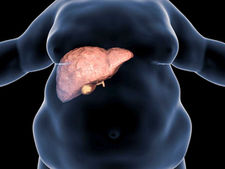
Arrival
Varicose veins are the appearance of veins under the skin, blue in color, enlarged and twisted. Although swelling may initially occur as a result of the expansion of the veins, as varicose veins increase, large vein bundles may form and even vein ruptures may occur. Although varicose veins mostly cause visual discomfort in the first years, they can cause pain later on.
If venous insufficiency develops, swelling in the legs occurs. If a clot forms in varicose veins (thrombophlebitis), pain, swelling and redness occur in the legs. Varicose veins are more common in women than in men. Its incidence increases with advancing age.
What are the Risk Factors for Varicose Veins?
Many factors play a role in the formation mechanism of varicose veins. Varicose veins may occur due to pregnancy, obesity, standing for long periods of time, some professions, being a woman, birth control pills and hormone treatments, wearing tight clothing, constipation, age and genetic factors.
How Do Varicose Veins Occur?
Varicose veins occur as a result of insufficiency in the vein valve. Blood constantly flows back and pools. This causes increased pressure and swelling in the vein. Over time, the dilation of the vein increases. Varicose veins can occur at any level of the veins. There may be venous insufficiency in the groin, or there may be insufficiency further down in the leg level. Sometimes the cause of varicose veins may be a clot in a vein. Blood pools behind the blocked vessel and the vessel expands.
What are the symptoms of varicose veins?
Blue purple swelling in the legs Pain Feeling of heaviness in the legs Swelling in the legs Numbness in the legs Itching
What are the Types of Varicose Veins?
Varicose veins; They are divided into three groups: capillary varicose veins, reticular varicose veins and large vein varicose veins. Capillary varicose veins usually occur as a result of ruptures of these vessels. They resemble spider webs in appearance. They are frequently seen in young women who are pregnant and use hormones. Reticular varicose veins are slightly raised and blue in color, mostly seen behind the knees and around the ankles. Large vein varicose veins occur as a result of the insufficiency of the large vein in the leg called the saphenous vein. They become quite puffy and greenish from the skin. They show all the symptoms of varicose veins.
Varicose veins, which initially cause discomfort only in appearance; They can cause conditions such as severe pain in the leg, inflammation of the vein, rupture of the varicose vein, bleeding, and clot formation in the varicose vein and throwing the clot into the lungs (pulmonary embolism).
What are the Treatment Methods for Varicose Veins?
First of all, the patient is approached holistically. Standard of living, mobility, type of varicose veins, and how the venous system works are examined. Risk factors are questioned. Then, the most suitable treatment plan for the person is created. Radiofrequency ablation and variclose bonding can be performed without making an incision. In these procedures, discharge is provided on the same day and there is no need for surgery. Also for superficial capillary varicose veins; Foam or direct sclerotherapy can be applied as a day treatment in the outpatient clinic. Benefits can be increased by combining methods depending on the diameter and course of the vein.
With the mini phlebectomy method, varicose veins that become swollen and curly on the skin surface can be surgically removed through tiny skin incisions. Sclerotherapy: Sclerotherapy is the process of administering a drug with vein-closing properties into the vein with the help of a syringe with a thin needle tip. Thus, the small vein in which the procedure is performed is closed and is absorbed and destroyed by the skin over time. Varicose veins on the legs become less visible or invisible.
The most suitable veins for sclerotherapy treatment are small varicose veins and capillary varicose veins close to the skin. Radiofrequency treatment: When radiofrequency waves are applied into the vein, it causes an increase in temperature in the vein. This heat increase causes the inner wall of the vein to burn at the same laser energy. This burn on the inner surface of the vein allows the vein to adhere and close, thus allowing the varicose vein to heal.
FOR INFORMATION AND APPOINTMENT, YOU CAN LEAVE YOUR NUMBER OR ASK OUR EXPERTS
YOU CAN LEAVE YOUR NUMBER FOR INFORMATION AND APPOINTMENT AND ASK QUESTIONS TO OUR EXPERTS



-04.png)
-06.png)
-05.png)
-08.png)
-07.png)























